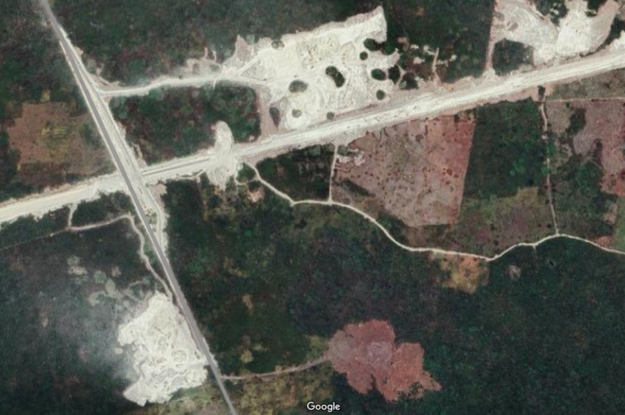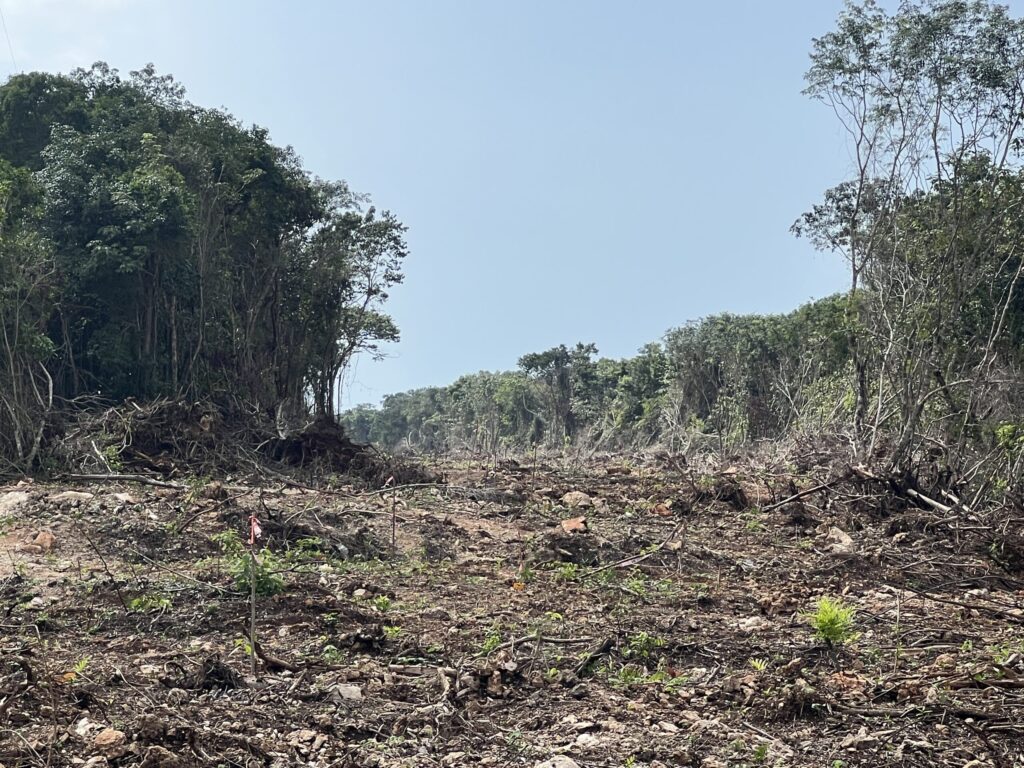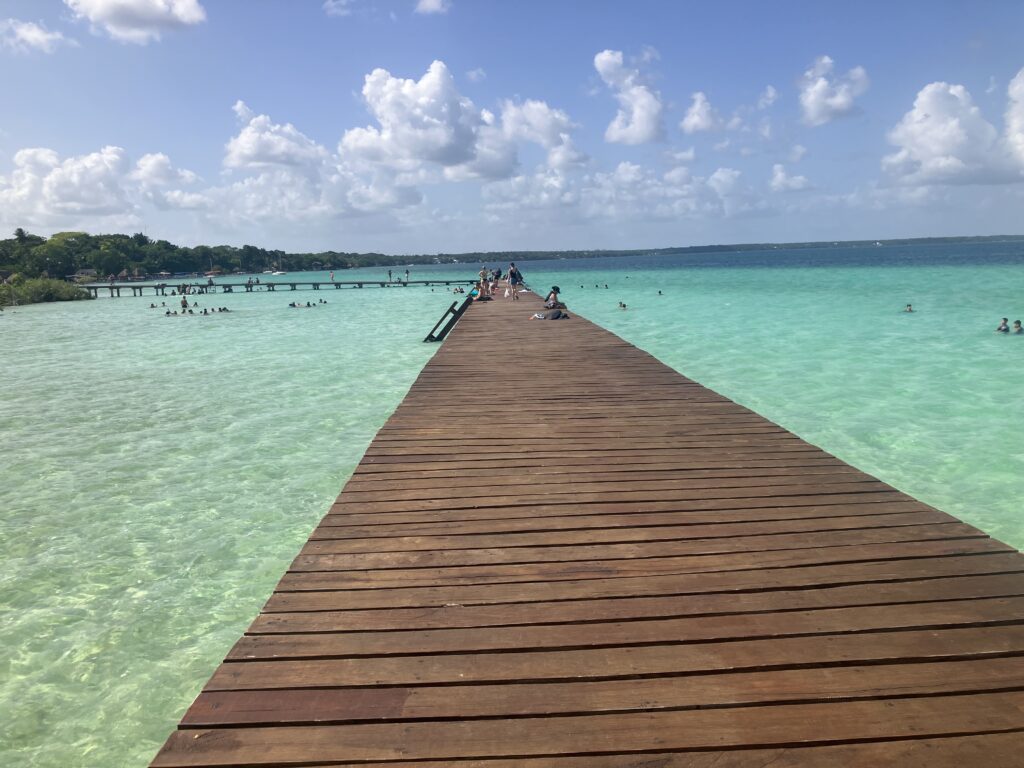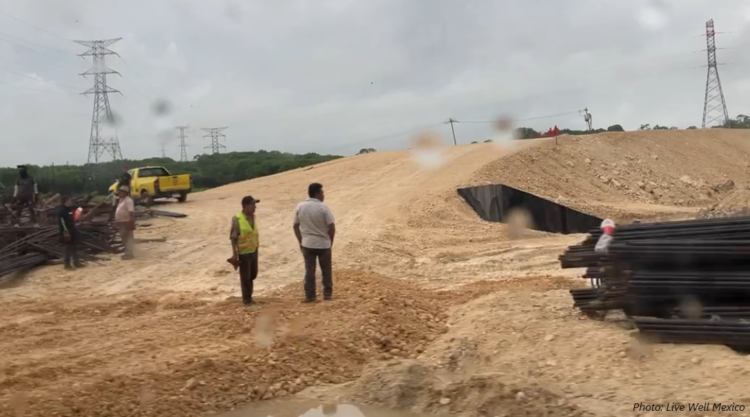When you check Google for common questions about the new Maya Train, tourists typically want to know if it’s … open, finished, safe, high speed, and where it stops.
Not many ask about the cost.
This article will focus on the cost(s), but please don’t expect to find any train fares here. Instead, we’ll look at impacts that are seldom talked about, including some that are only just emerging.
Why Was Train Maya Built?
For a country that still lacks a passenger train between its two biggest cities (CDMX and Guadalajara — home to 14 million people combined), you may be wondering why the Mexican government prioritized building a rail line in the Yucatán, a place that most Mexicans don’t live in or visit.
The Maya Train was conceived as a tourist train, to ferry the huge number of visitors to/from the Riviera Maya on the Yucatán Peninsula and means to bring economic opportunity to the region.
Given the sensitive wildlife habitat and great archeological significance of this region, the project was initially met with vocal protests from academics, environmentalists, and local groups. Yet the government insisted it would do no harm.
And I’ll admit that the idea of Train Maya initially seemed charming. I’ve had a soft spot for trains since I was a university student spending my junior year in Italy. Hopping trains from one city center to another to enjoy impromptu weekend getaways was an incredible thrill. And for a poor student, it was also affordable and energy efficient.
So, I had a vision of the Maya Train that resembled a sleek, lean, low-profile rail network — with a light footprint given the ecologically sensitive habitat it was slated to occupy.
The Final Phase of Work on Train Maya

The Maya Train initiated passenger service last December on the northern section of the route, from Campeche to Cancún. Since then, service has expanded to include Palenque.
Work continues on the southern route from Chetumal to Escárcega in Campeche.
A few weeks ago, my husband and I arrived for vacation in Bacalar and Kohunlich (the southern Yucatán). If not familiar with this area, it’s a popular but low-key destination for eco-tourists and fans of Mayan ruins about an hour from the Caribbean coast outside Chetumal.
To my surprise, the rainforest lodge I had booked sat a mere 3.5 km from segment 7 of Train Maya, the final leg of the 1,561 km (970 mile) route to be built.

Consequently, we had a front-row seat to the project, and the intensive development consuming this once sleepy, verdant corridor.
Up to now, the area around Chetumal has been beloved for its ancient Mayan ruins and azure lagoons. Off to the west in the Calakmul Biosphere, some of the world’s leading wildlife biologists can be found studying jaguars and other exotic creatures that call its dense rainforest home.
What We Saw in Chetumal
Maya Train construction is in full force east and north of Chetumal. A steady flow of heavy trucks ferry workers, concrete, gravel, and other materials to the project 24/7.
The single-lane roads leading to the archeological sites to the west and the resort of Bacalar to the north are perpetually choked with traffic, with a predictable dampening effect on tourism.
Particularly bad is the northbound route from the airport to Bacalar, a car trip that previously took around 35 minutes. Now the traffic jams can stretch for 1-2 hours as vehicles must thread narrow detours while the main route is blocked by trucks and materials.
In addition to the train route, voracious mining projects are active across the region to source the massive amounts of sand and gravel needed to construct the elevated train platforms along the route’s remaining 287 kilometers.

Huge swaths of land have been cleared for this purpose, on an industrial scale most easily grasped from the vantage point of an airplane seat or satellite image. Somewhat menacingly, the project also teems with military vehicles and personnel.
It’s odd seeing the military embedded in the buildout of a tourist train. This is the result of AMLO’s insistence that Maya Train was “essential to national security,” a claim Mexico’s Supreme Court condemned as baseless, but the president simply ignored.
I kept replaying my mental image of a “tourist train” against the scale of what we saw on the ground. This project doesn’t look or feel like an installation for ferrying around carefree tourists.
Perhaps unsurprisingly, just this week the president-elect Claudia Sheinbaum announced in a press conference that the purpose of Train Maya is evolving. She said her government would allocate funds (around $1.8 billion USD) to retrofit the railway for freight cargo, hence making clear that this project will support commercial logistics and who knows what else.

Environmental Crimes
Satellite images collected and analyzed by Cartocritica in 2023 show the scale of deforestation the Maya Train has caused. An area spanning 10,831 hectares (26,764 acres) is being used for the train route, with 61% of that land deforested.
In the Yucatán, the average hectare can hold about 900 trees, according to Mexico’s Civil Council for Sustainable Forestry (CCMSS). If correct, this means as many as 6 million trees have been removed for Train Maya.
The forest loss caused by Train Maya is equivalent to nearly 10 Chapultepec Forests, or 20 Central Parks in NYC.

Notably, back in 2018 AMLO claimed that not a single tree would be cut during the build of Train Maya. So it was no surprise when his government initially pushed back on Cartocritica’s findings.
More recently, officials have conceded that at least 3 million trees were cut, or roughly half of what a scientific analysis has found to be true.
When seeking to convert rainforest into a transportation network, Mexican law requires that a land use change request be submitted to the federal agency responsible for issuing building permits. Yet AMLO illegally ordered the project to press ahead without permits.
No credible study to determine the train line’s feasibility or profit potential was conducted either.
By the Numbers: Project Cost & Ridership
Government projections in 2019 had Train Maya draining the equivalent of $8.5 billion USD from public coffers, with an expected $10.5 billion USD in “benefits” based on some pretty outlandish assumptions.
Due to myriad challenges, the project is now likely to cost $30 billion USD — which is one expensive vanity project.
So, how’s ridership been?
Numbers released by the Mexican government in July showed daily ridership hitting a mere 3%-5% of the estimated daily volume, with the Merida to Cancún route by far the most popular.
Round trip travel on the Cancún–Palenque route is averaging a mere 100 rides per day.

Critics blame the route design for poor ridership numbers. Instead of aligning the track alongside the existing highway in Quintana Roo (the initial plan), government planners re-routed Train Maya 4.5 miles inland (cutting tropical rainforest to do so) between Cancún and Merida after hotel operators vehemently complained about the project disrupting their business.
The inland location requires tourists to taxi to and from the stations, instead of being able to walk to it from their hotels. Due to the inconvenience, few bother to use it.
The same goes for local workers, i.e. using the train takes too long and isn’t where tourist jobs are located — near the beaches.
Uggh.
What Do The Locals Think?
We had numerous conversations with taxi drivers, waiters, hotel staff during our time in Kohunlich and Bacalar.

At Explorean Kohunlich Lodge, staff were coy about discussing the project. We mostly wanted to know about how it has impacted the area’s wildlife.
One staffer noted that as work on Train Maya crept closer to the lodge and work began on a new bridge span to cross over the train track, incessant pounding by heavy machinery to drive steel and concrete pilings into the ground sent larger mammals fleeing to the west in search of calm.
Yet the Calakmul Biosphere – a UNESCO World Heritage Site that’s home to ancient Mayan ruins and one of Mexico’s healthiest jaguar populations – is not immune from Train Maya construction. It will cut through the biosphere.
Our guide on a kayak tour of the Bacalar lagoon told us about two villages being washed away following heavy rains recently, with some losing everything they had. He blamed the rampant deforestation by Train Maya, as fewer trees means less natural “sponge” to sop up all that rainwater.
Ironically, the deforestation associated with Train Maya is expected to exacerbate water shortages during the Yucatán’s dry season. Over the past 20 years, rainfall has dropped by two-thirds across the state, prompting water rationing.
In addition, train construction is threatening the Great Maya Aquifer, which provides fresh drinking water to the region’s 5 million people, as it sits very close to the surface.
Dining at Waah Cocina in Bacalar one evening, we chatted up our waiter, who ironically had relocated here from Nayarit (Mexico’s Pacific coast) a few years ago for a more relaxed lifestyle. He worried about how higher tourist traffic from the train might impact the lagoon’s delicate ecology, as its health depends principally on good stewardship by visitors.
Collectively, many locals fear what I call the “Tulumification” of Bacalar, i.e., where eco-conscious visitors get replaced by a different sort of tourist at scale, bringing with it overdevelopment and the permanent alteration of everything unique and special about this place.
Our waiter grimaced when alluding to the situation up in Tulum, which includes cartel violence with tourists in the crossfire, uncontrolled sewage, rampant development of condos for new Airbnbs, and Instagrammer overload.
Conclusion
Whether you choose to ride Train Maya or not, the project has brought and will continue to bring massive changes to the land, people, and animals living along its route.
From my perspective, I cannot stop wondering… Who is benefiting from all this development, and at what cost to the Mexican people, nature, and its cultural heritage?

